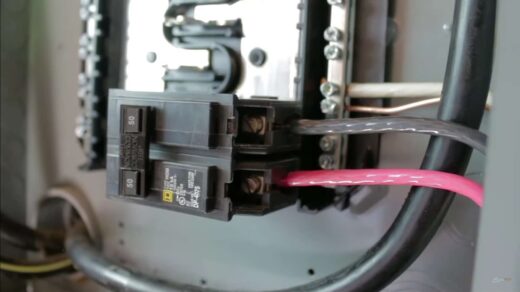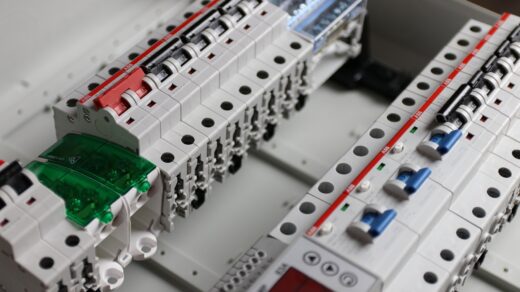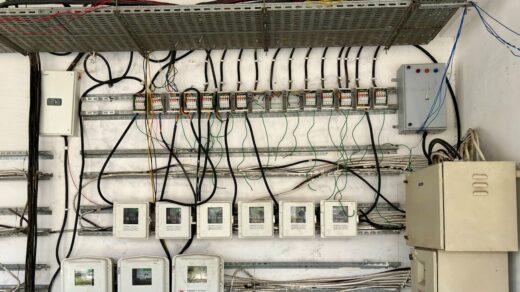Regardless of how long you’ve been using LED light bulbs or if you’ve only recently made the switch from traditional incandescent bulbs, flickering problems might arise occasionally. While some LED flickering can be addressed with simple solutions, other instances may signify deeper issues. Factors like voltage inconsistencies or loose wiring often contribute to these flickering challenges.
Table of Contents
- LED Bulbs Flickering Without a Dimmer:
- Factors Related to the Bulb Itself;
- Complications Arising from Wiring;
- Power Supply and Electrical Concerns.
- Why Do LED Bulbs Flicker Even When Switched Off?;
- Addressing and Preventing Flickering Lights in Your Home;
- Recognizing Warning Signs of Serious Flickering Problems;
- Effective Solutions for Resolving Light Flickering Problems;
- Conclusion.
LED Bulbs Flickering Without a Dimmer
It’s not uncommon for LED light bulbs to experience flickering. While many associate this with issues in the dimmer, not all LED lights come with a dimming feature. If your LEDs are not designed for dimming and yet exhibit flickering, the root causes could vary. This could be due to an inherent issue with the bulb, complications in the wiring, or inconsistencies in the power supply. It’s crucial to address and understand these underlying problems to ensure optimal lighting performance.
Factors Related to the Bulb Itself
LED bulbs can be sensitive pieces of equipment. One of the chief reasons for their flickering might be tied to the bulb’s internal driver component. If the component is of subpar quality, it might struggle under the heat generated when the bulb operates. In such cases, noticeable swelling or bulging might appear in the bulb’s capacitor, indicating potential problems.
Complications Arising from Wiring
The wiring in your lighting fixtures plays a pivotal role in ensuring consistent light output. An often-overlooked aspect is the length of the wire connecting various parts of your lighting system. Ideally, these wires should be at least 6 inches long to prevent disruptions. If any wire in the setup — be it connecting the switch, the fixture, or the bulb — is loose or suboptimally placed, it can lead to flickering.
Power Supply and Electrical Concerns
Your home’s power infrastructure can influence how your LED bulbs perform. A damaged electrical panel or any slack in the circuit breaker’s wiring can disrupt the proper functioning of your lights. It’s also worth noting the dynamics between different bulb types. For instance, incandescent bulbs consume nearly all of the power allocated to them, leaving little for LEDs and other devices in the same circuit. This imbalance, especially if you have multiple incandescent bulbs running simultaneously, can lead to power shortages and consequent flickering in your LEDs.
Why Do LED Bulbs Flicker Even When Switched Off?
LED bulbs, even when switched off, might occasionally display an unusual behavior: they flicker. This phenomenon is especially evident in contemporary homes equipped with technologically advanced smart switches. These switches are more than just on-off toggles; they integrate a range of functionalities such as dimming controls, nighttime illumination, and even WiFi-based remote operation capabilities.
To ensure the seamless operation of these advanced features, smart switches need a consistent, albeit minimal, flow of power. This constant trickle of energy, even in the off state, is what facilitates instant response and operation.
However, complications arise when the internal circuitry of these smart switches isn’t perfect. A common fault is the inability of the switch to effectively utilize a neutral wire. Given that LED bulbs operate on a negative wire system, discrepancies in switch circuitry can result in a phenomenon known as “capacitive coupling.” Essentially, this leads to a buildup of residual energy in the circuit’s capacitor over time. As this energy accumulates, it can manifest as a slight glow or the perplexing flicker in the LED bulb, even when it’s meant to be off.
Addressing and Preventing Flickering Lights in Your Home

The intermittent flickering of lights can often be attributed to voltage inconsistencies. One major contributor is the simultaneous use of multiple high-power electrical appliances. For instance, running your dishwasher along with several other devices can alter the voltage balance, leading to the flickering of lights. A practical solution to this is redistributing power consumption. By allocating high-demand appliances to a 240-volt circuit, you can balance the load and mitigate the flickering issue. However, if your current electrical setup doesn’t support additional 240-volt breakers, you might need to consider an upgrade or expansion.
- Environmental factors can also play a role. Accumulation of dust or debris around the bulb can affect its performance. A quick clean with compressed air might resolve minor problems. But if the issue persists even after ensuring the bulb is securely fitted, it might be time to call in professionals to check the connections and wiring;
- The compatibility of switches and bulbs is vital. It’s not uncommon for individuals to unknowingly purchase switches that don’t align with the specifications of their LED lights. When investing in switches or bulbs, always ensure they are designed to work in tandem. Opting for low-quality or incompatible LEDs can exacerbate flickering issues;
- While some light maintenance can be DIY, intricate electrical problems should always be left to the experts. Even seemingly small electrical issues can pose significant risks if not addressed correctly. Rely on seasoned electricians to ensure both the safety and efficiency of your home’s lighting systems.
Recognizing Warning Signs of Serious Flickering Problems
Flickering lights aren’t just an inconvenience; they can pose risks to both your health and the safety of your home. Short-term exposure to any frequency between 3Hz-70Hz can lead to seizures, underscoring the urgency of addressing flickering lights promptly. Moreover, flickering lights often serve as a red flag, signaling potential issues with your electrical system. It’s possible that one of your circuits has become overloaded.
In such a situation, we strongly advise you to get in touch with our experts for a thorough diagnosis. Problems like subpar wiring or a malfunctioning circuit breaker can compromise safety and increase the likelihood of an electrical fire. Typically, an overloaded circuit breaker may only cause damage to the lights, but there are instances when connected appliances suffer harm as well. Don’t take flickering lights lightly; act now to ensure your well-being and the safety of your home.
Effective Solutions for Resolving Light Flickering Problems

When light flickering issues become serious enough to warrant the attention of a professional electrician, there are several effective solutions at their disposal. One key approach is the use of high-quality drivers. These specialized drivers can effectively smooth out power current peaks, offering a remedy for flickering problems in many cases.
In situations where flickering is caused by voltage fluctuations within your home, our skilled electricians may recommend replacing your entire electrical panel. This upgrade ensures that your home’s power demands are properly accommodated, addressing the underlying issue. If the flickering problem stems from a malfunctioning component, our experts can perform a precise replacement of the damaged part, restoring normalcy to your lighting system.
As part of our thorough assessment, we inspect all the switches in your home to verify that everything is in proper working order, leaving no room for unresolved issues. Trust in our professionals to tackle light flickering problems with precision and expertise, ensuring your home’s lighting is both reliable and safe.
Conclusion
Addressing light flickering issues is crucial for home functionality and safety. While it may sometimes seem like a minor annoyance, it can indicate more profound underlying problems, affecting your well-being. In particular, health risks may arise when flickering occurs within specific frequency ranges. Professional assistance is often needed to stabilize power currents, upgrade electrical panels, and replace malfunctioning components. Electricians also inspect switches and wiring, ensuring the safety and reliability of your lighting system. Tackling flickering issues promptly is key to maintaining a comfortable and secure home.








